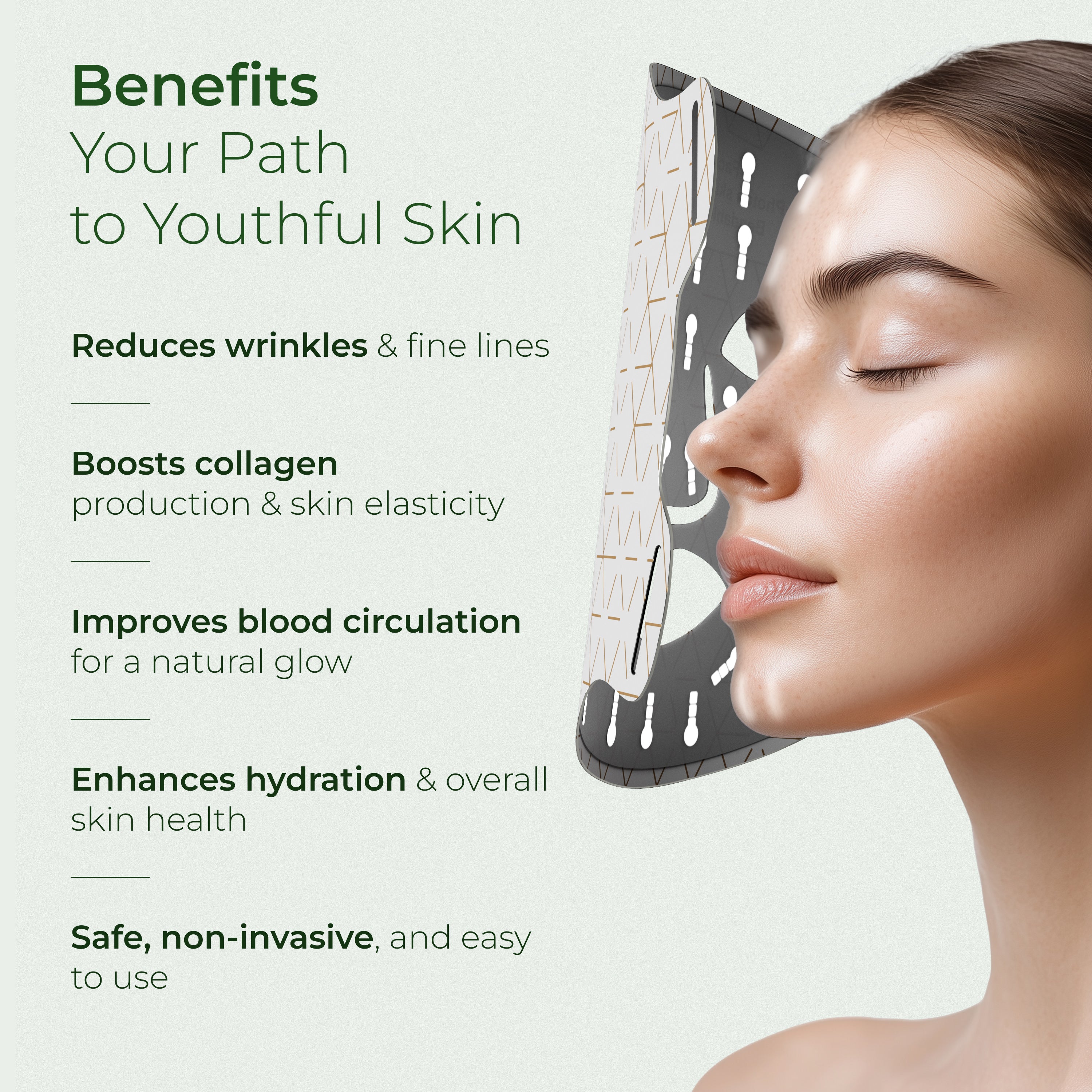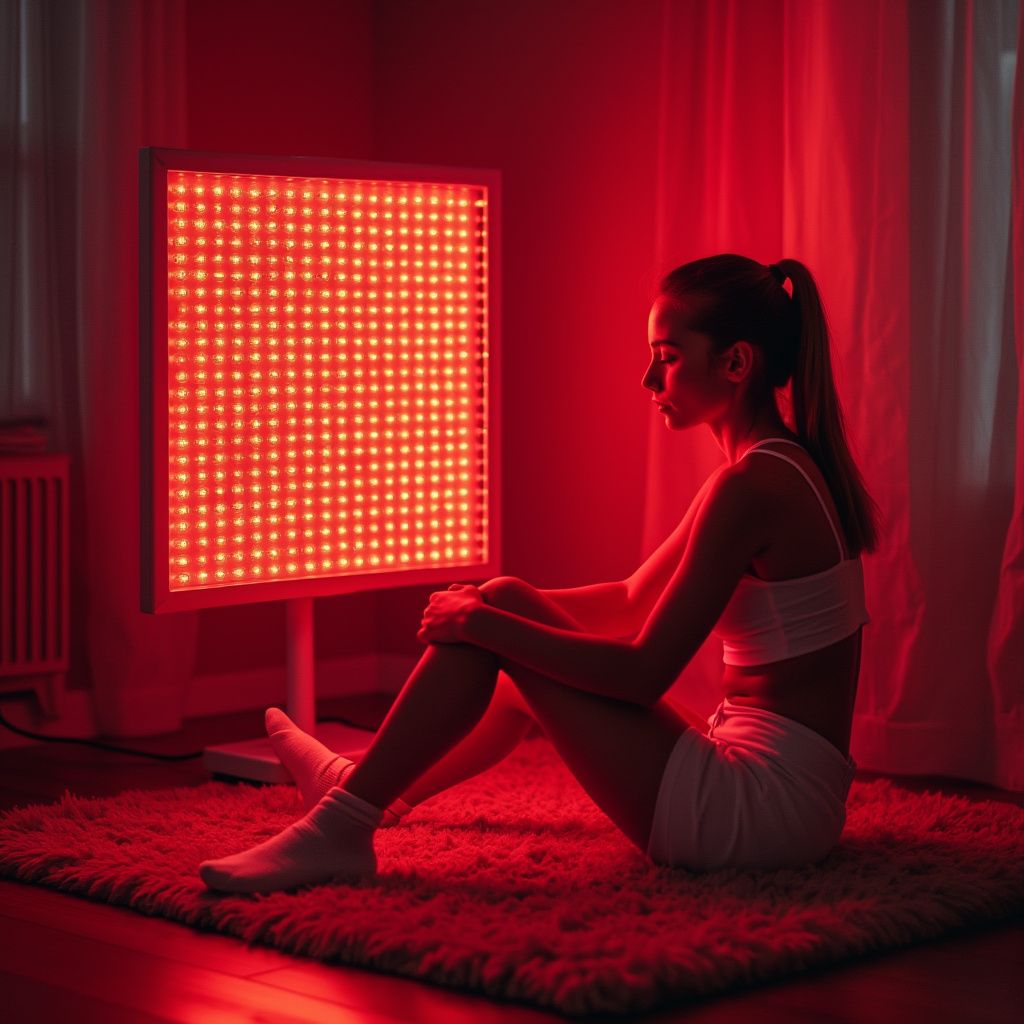Red light therapy, often referred to as "red light," has become a sought-after solution for those seeking natural and effective ways to improve skin health, relieve pain, and enhance overall well-being. This non-invasive therapy, also known as photobiomodulation, uses specific wavelengths of light to penetrate the skin and provide a range of benefits, including pain relief and improved cellular function. However, determining how often to use a red light therapy lamp can be key to maximizing its potential benefits. Let’s delve into this topic, exploring the ideal frequency of use, its benefits, and considerations for safe and effective application.
Understanding Red Light Therapy and Its Mechanism
Red light therapy works by utilizing specific wavelengths of light, typically between 600 and 850 nanometers, to target areas of the body and stimulate healing and rejuvenation. These wavelengths, often delivered through LEDs or laser devices, penetrate the skin’s surface to reach deeper tissues, triggering photobiomodulation. This process enhances ATP (adenosine triphosphate) production in cells, providing the energy necessary for cellular repair and growth.
The light energy absorbed by the skin and cells can help reduce inflammation, improve skin health, and even relieve pain in conditions such as joint pain or back pain. It’s no wonder that a range of devices designed for red light therapy has become increasingly popular for at-home use.
The Ideal Frequency for Red Light Therapy Treatments
How often you should use red light therapy depends on your goals and the type of red light therapy device you have. For most people, starting with sessions 3-5 times per week is a common recommendation. Each session typically lasts 10-20 minutes, depending on the device and the targeted areas of the body.
For skin health and anti-aging benefits, such as improving the appearance of fine lines and wrinkles, consistency is key. Using devices 4-5 times a week during the initial phase can help achieve noticeable results. Once desired improvements are observed, maintenance sessions 1-3 times per week are usually sufficient.
For pain relief, including joint pain, back pain, or other types of pain, the frequency may vary based on the severity of the condition. Some users find relief with daily use for the first two weeks, followed by less frequent sessions as the condition improves. Always consult a qualified health professional to tailor the frequency to your specific needs.
At-Home Red Light Therapy: Convenience and Consistency
One of the major advantages of red light therapy at home is the comfort and convenience it provides. With a range of benefits associated with therapy products, including full-body red light therapy and targeted treatments for specific areas of the body, having a device at home encourages consistent use.
There are different types of red light therapy devices available, including light therapy panels, portable red light therapy devices, and handheld devices such as a wand. Whether you’re targeting the skin surface or deeper tissues with near-infrared wavelengths, at-home devices are designed to be user-friendly and effective.
Safety Considerations and Eye Protection
When using a red light therapy device at home, safety should be a top priority. The light used in these devices is non-invasive, but proper precautions are necessary to protect your eyes, especially if the device emits near-infrared light. Many devices come with protective eyewear, and it’s essential to follow the manufacturer’s instructions for use.
Additionally, some devices are classified as Class II medical devices, meaning they meet specific safety standards for at-home use. Always check if your light therapy device is effective and safe for your intended purpose.
Red Light Therapy for Skin Health and Pain Relief
Red and near-infrared light therapy offers a range of benefits, from improving skin and reducing the appearance of fine lines to relieving pain and promoting healing in deeper tissues. Infrared light, in particular, can penetrate deeper into the skin, making it effective for addressing lower back pain and other chronic conditions.
Customer reviews often highlight the benefits of red light therapy, emphasizing improvements in skin texture, reduced inflammation, and enhanced sleep quality. For those seeking natural ways to improve skin health or help with pain, red light therapy provides an appealing option.

Key Factors to Consider for Effective Use
When determining how often to use red light therapy, several factors come into play:
- Device Type: Full-body devices, handheld wands, or light therapy panels may have different recommended usage frequencies.
- Target Area: Areas such as the face, back, or joints may require varying session lengths and frequencies.
- Intensity and Wavelengths of Light: Devices emitting specific wavelengths of red and near-infrared light (NIR) may have unique protocols.
- Personal Goals: Whether you aim to improve skin health, relieve pain, or enhance recovery, your frequency of use should align with your objectives.
Scientific Evidence and Potential Benefits
Evidence that red light therapy works comes from numerous studies and user experiences. The therapy has been shown to reduce the appearance of wrinkles, enhance collagen production, and provide pain relief in areas of the body affected by chronic conditions. Its ability to penetrate the skin with specific wavelengths of red and near-infrared light is a key factor behind its effectiveness.
The potential benefits of red light therapy extend beyond cosmetic improvements. It can also help improve sleep, reduce inflammation, and promote overall well-being. While results may vary based on individual factors, the effects of red light therapy are often cumulative, requiring regular sessions for optimal results.
Tips for Maximizing Results
To make the most of your red light therapy treatments, consider the following tips:
- Be Consistent: Regular sessions are crucial for noticeable improvements.
- Follow Instructions: Each device has specific guidelines for use, including session duration and distance from the light source.
- Track Progress: Monitor changes in your skin and pain levels to adjust your routine as needed.
- Seek Professional Advice: A qualified health professional can provide personalized recommendations, especially for medical conditions.
The Benefits of Combining Red and Infrared Light
Red light therapy is also effective when combined with near-infrared light, offering deeper penetration for targeting muscles, joints, and other tissues. Red and near-infrared wavelengths are often used together in therapy products to provide a comprehensive approach to healing and rejuvenation.
Devices emitting both red and infrared light cater to users seeking a range of benefits, from pain relief to enhanced cellular function. Whether you’re using a full-body device or a portable red light therapy device, combining these wavelengths can amplify the therapy’s effects.
Conclusion
Red light therapy is a versatile and non-invasive therapy with a wide range of benefits, including improving skin health, relieving pain, and enhancing overall cellular function. The frequency of use depends on your goals, the type of light therapy device, and the targeted areas of the body. For most users, starting with sessions 3-5 times per week is an effective approach, with adjustments based on individual needs and results.
With its growing popularity and evidence supporting its benefits, red light therapy is a valuable tool for those seeking natural and effective ways to improve their health and well-being. By following recommended protocols and prioritizing safety, you can enjoy the full benefits of red light therapy in the comfort of your own home.
Turn self-care into a pleasure and enjoy visible results after the first procedures with an electric mask for removing wrinkles! You can buy this device at the best price in our online store.
Key Takeaways
- Red light therapy works by using specific wavelengths of light to penetrate the skin and provide cellular benefits.
- Start with 3-5 sessions per week, adjusting frequency based on your goals and device type.
- Use a red light therapy device at home for convenience and consistent results.
- Protect your eyes and follow safety guidelines for effective use.
- Combining red and near-infrared light enhances therapy outcomes.
- Consult a qualified health professional for personalized advice.












Hinterlasse einen Kommentar
Diese Website ist durch hCaptcha geschützt und es gelten die allgemeinen Geschäftsbedingungen und Datenschutzbestimmungen von hCaptcha.